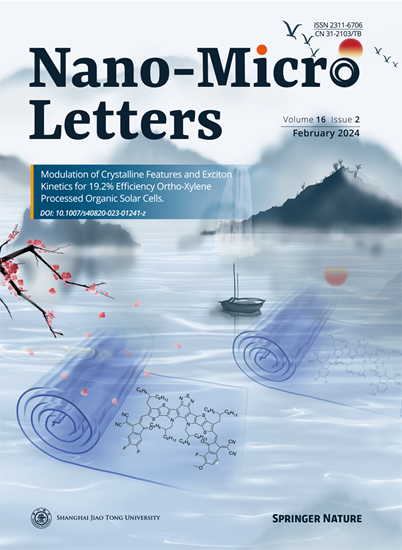From Wave Energy to Electricity: Functional Design and Performance Analysis of Triboelectric Nanogenerators.
IF 26.6
1区 材料科学
Q1 Engineering
引用次数: 0
Abstract
Triboelectric nanogenerators (TENGs) offer a self-sustaining power solution for marine regions abundant in resources but constrained by energy availability. Since their pioneering use in wave energy harvesting in 2014, nearly a decade of advancements has yielded nearly thousands of research articles in this domain. Researchers have developed various TENG device structures with diverse functionalities to facilitate their commercial deployment. Nonetheless, there is a gap in comprehensive summaries and performance evaluations of TENG structural designs. This paper delineates six innovative structural designs, focusing on enhancing internal device output and adapting to external environments: high space utilization, hybrid generator, mechanical gain, broadband response, multi-directional operation, and hybrid energy-harvesting systems. We summarize the prevailing trends in device structure design identified by the research community. Furthermore, we conduct a meticulous comparison of the electrical performance of these devices under motorized, simulated wave, and real marine conditions, while also assessing their sustainability in terms of device durability and mechanical robustness. In conclusion, the paper outlines future research avenues and discusses the obstacles encountered in the TENG field. This review aims to offer valuable perspectives for ongoing research and to advance the progress and application of TENG technology.从波浪能到电能:摩擦纳米发电机的功能设计与性能分析。
摩擦电纳米发电机(TENGs)为资源丰富但受能源限制的海洋地区提供了一种自我维持的动力解决方案。自2014年在波浪能收集方面的开创性应用以来,近十年的进展已经在该领域产生了近数千篇研究文章。研究人员已经开发出各种具有不同功能的TENG设备结构,以促进其商业部署。然而,在对TENG结构设计的综合总结和性能评估方面还存在差距。本文介绍了六种创新的结构设计,重点是提高内部装置输出和适应外部环境:高空间利用率,混合发电机,机械增益,宽带响应,多向操作和混合能量收集系统。我们总结了由研究界确定的器件结构设计的流行趋势。此外,我们对这些设备在电动化、模拟海浪和真实海洋条件下的电气性能进行了细致的比较,同时还评估了设备耐用性和机械稳健性方面的可持续性。最后,本文概述了未来的研究方向,并讨论了TENG领域遇到的障碍。本文旨在为正在进行的研究提供有价值的观点,并推动TENG技术的发展和应用。
本文章由计算机程序翻译,如有差异,请以英文原文为准。
求助全文
约1分钟内获得全文
求助全文
来源期刊

Nano-Micro Letters
NANOSCIENCE & NANOTECHNOLOGY-MATERIALS SCIENCE, MULTIDISCIPLINARY
CiteScore
32.60
自引率
4.90%
发文量
981
审稿时长
1.1 months
期刊介绍:
Nano-Micro Letters is a peer-reviewed, international, interdisciplinary, and open-access journal published under the SpringerOpen brand.
Nano-Micro Letters focuses on the science, experiments, engineering, technologies, and applications of nano- or microscale structures and systems in various fields such as physics, chemistry, biology, material science, and pharmacy.It also explores the expanding interfaces between these fields.
Nano-Micro Letters particularly emphasizes the bottom-up approach in the length scale from nano to micro. This approach is crucial for achieving industrial applications in nanotechnology, as it involves the assembly, modification, and control of nanostructures on a microscale.
 求助内容:
求助内容: 应助结果提醒方式:
应助结果提醒方式:


